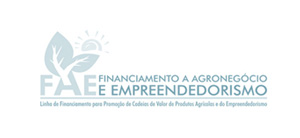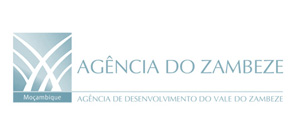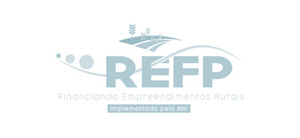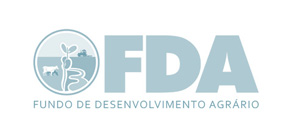FAE
Banco Nacional de Investimento, in partnership with Agência do Zambeze, introduced a credit line for Agriculture and Entrepreneurship.
An initiative that reinforces BNI’s commitment to the development of the national economy and that intends to plant the seed of the entrepreneurial spirit in young Mozambicans who seek to start or boost their business while cultivating the development of their technical and professional skills.
The Fund’s investment committee is made up of representatives from several institutions. This body approves the allocation of credits to beneficiaries of the Fund.
Objectives
The fund’s objective is to improve the value chain of agricultural products and to promote entrepreneurs as part of the project to develop professional technical skills in the Zambezi Valley.
Beneficiaries
- Recent graduates (individual and/or associates) from the professional technical schools in the areas of agribusiness or similar located in the Zambezi Valley.
- Micro, small and medium businesses, cooperatives, for-profit associations located in the Zambezi Valley that practice activities in the value chain of strategic products, agribusiness or related areas.
Eligibility Criteria
All projects that cumulatively meet the following conditions are eligible for the Fund:
- Being a newly graduated student in academic and technical areas relevant to agribusiness;
- Companies or legal persons with equity shares and/or wishing to invest in the Zambezi Valley who practice activities in the value chain of strategic products, agribusiness or related areas;
- Projects in the value chain of strategic agricultural products (rice, potatoes, beans and vegetables, etc.) from the Zambezi Valley.
Application Process
The application process for the FPCVPAE consists of the following phases:
Expression of interest
The applicant must submit a letter of expression of interest, which consists of a brief description of the project, filling in the form to be made available by the Fund Manager who can assist in the process of its preparation.
Business plan presentation
The letter of expression of interest must be supported by a specific, coherent, feasible and sustainable business plan and other relevant documentation.
Financing
The amount of financing will be based on the real needs of the project, that is, the amount necessary for the proposer to complete the production and marketing cycle.
Financing may take different forms depending on the specific characteristics of each project, with emphasis on the following:
- Single disbursement of financing after project approval;
- Disbursement of financing in tranches depending on the completion of the different phases of the project;
- In-kind financing, that is, the fund may acquire the inputs needed to complete the production and marketing cycle.
Conditions
Credit operations are exclusively in meticais and the maximum amount per operation within the scope of the financing of recently graduated young entrepreneurs may not exceed 800.000,00 Mt (eight hundred thousand meticais) in the case of financing for agro-livestock and agricultural marketing and 1.200.000,00 Mt (one million and two hundred thousand meticais) in the case of financing for agro-industry.
Loan interest rates will be determined based on the reality of each project, however these will be fixed in the range of 10.00% to 15.00%.
The financing term will be defined according to the production, commercialization cycle and cash flows of each project.
Feasibility Criteria
- Technical Feasibility (Weight: 30%)
Ability of the project’s proponent to implement said project, that is, its knowledge of agribusiness and financial management and also the commitment of the project’s proponent. Additionally, it includes the agro-ecological conditions for the implementation of the project.
- Economic and Financial Feasibility (Weight: 60%)
The project’s capacity to generate sufficient cash flows to cover operating expenses, financial charges, debt repayment and at the same time ensure the project’s continuity.
- Social Feasibility (Weight: 10%)
Capacity of the project to generate income, direct and indirect employment, that is, the impact of the project on the applicant’s employment and income as well as the positive externalities (employment and income to third parties) and negative externalities (pollution, among others). In the analysis of the social viability of the project, the ratio between costs and benefits must be less than one.
Monitoring and Evaluation
The Fund’s Managing Entity (BNI), the Zambezi Valley Development Agency (ADVZ) and the Investment Committee will monitor and regularize borrowers to ensure that the funds are invested under the agreed conditions and also to advise them on best practices for the application of funds, such as the choice of suppliers, as well as in strategies to guarantee the profitability of their projects.
Covered Schools
Universities
Faculdade de Ciências e Tecnologia – Beira (Unizambeze)
Faculdade de Engenharia Agronómica e Florestal – Mocuba (Unizambeze)
Faculdade de Ciências Agrárias – Angónia (Unizambeze)
Faculdade de Engenharia Ambiental e dos Recursos Naturais – Chimoio (Unizambeze)
Universidade Católica de Moçambique (Tete-Chimoio)
Higher Polytechnic Institutes
Instituto Superior Politécnico de Manica (ISPM)
Instituto Superior Politécnico de Songo (ISPS)
Medium Institutes and Basic Schools
Instituto Agrário de Chimoio (IAC)
Instituto Agrário de Mocuba (IAM)
Escola Profissional Agrária de Caia (EPAC)
Escola Agrária de Chidzolomondo (EAC)
Escola Agrária de Gorongosa (EAG)
Geographic Scope
The project covers the entire Zambezi Valley, specifically the following provinces:
a) Tete Province
Angónia, Cahora Bassa, Changara, Chifunde, Chiuta, Mágoe, Marávia, Macanga, Moatize, Mutarara, Tsangano, Zumbo, Marara, Doa e Cidade de Tete.
b) Zambezia Province
Chinde, Mopeia, Inhassunge, Maganja da Costa, Milange, Mocuba, Morrumbala, Namacurra, Nicoadala, Dere, Luabo, Mocubela, Molumbo e Cidade de Quelimane.
c) Sofala Province
Caia, Chemba, Cheringoma, Gorongosa, Maríngué, Marromeu e Muanza.
d) Manica Province
Barué, Guro, Tambara e Macossa.





